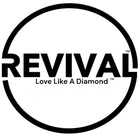
Diamonds have captivated humanity for centuries with their dazzling beauty and enduring symbolism of love and luxury. Traditionally, the rarity and high price tag associated with natural diamonds have led to the development of alternative options, including lab-grown diamonds. As technology advances, lab-grown diamonds have become nearly indistinguishable from their natural counterparts in terms of appearance and chemical composition. However, one question still lingers: Do lab-grown diamonds pass a diamond tester? In this blog post, we'll delve into the fascinating world of diamonds and explore the intricacies of diamond testing to answer this pressing question.
Understanding Lab-Grown Diamonds
Lab-grown diamonds, also known as synthetic or cultured diamonds, are created in controlled laboratory environments rather than being formed naturally over millions of years deep within the Earth's mantle. These diamonds are made using advanced technological processes that replicate the extreme pressure and temperature conditions required for diamond growth. Consequently, they possess the same chemical composition (carbon atoms arranged in a crystal lattice) as natural diamonds.
The Visual Resemblance
The first thing to note about lab-grown diamonds is their striking visual resemblance to natural diamonds. Through meticulous cultivation, they exhibit the same optical characteristics – transparency, brilliance, fire, and scintillation. This makes it challenging for even seasoned jewelers and gemologists to distinguish between the two types with the naked eye alone.
Diamond Testers: A Brief Overview
Diamond testers, also known as diamond detectors or diamond testers pens, are portable electronic devices designed to identify and distinguish between real diamonds and simulants like cubic zirconia, moissanite, or glass. These testers typically work based on one of two principles:
-
Thermal Conductivity: Natural diamonds are excellent conductors of heat, so they disperse heat quickly when exposed to a heat source. In contrast, most simulants do not conduct heat as effectively, leading to a slower heat dispersion. Diamond testers using this principle can differentiate between natural diamonds and simulants.
-
Electrical Conductivity: Diamonds are generally poor conductors of electricity. Some testers use this property to distinguish between diamonds and other materials, as most simulants conduct electricity to some extent.
Do Lab-Grown Diamonds Pass Diamond Testers?
Now, let's address the big question: do lab-grown diamonds pass diamond testers? The answer largely depends on the type of diamond tester being used.
-
Thermal Conductivity Testers: Most lab-grown diamonds pass thermal conductivity tests with flying colors. Since they share the same crystal structure as natural diamonds, they conduct heat similarly. Therefore, these testers often identify lab-grown diamonds as genuine.
-
Electrical Conductivity Testers: This is where things get interesting. Lab-grown diamonds may exhibit varying levels of electrical conductivity depending on the specific growth process and any impurities present. Some lab-grown diamonds may conduct electricity to a degree that is detectable by these testers. However, not all lab-grown diamonds will display electrical conductivity, so results can be inconsistent.
Advanced Testing Methods
While traditional diamond testers are suitable for identifying most lab-grown diamonds, advanced testing methods are available to differentiate between lab-grown and natural diamonds with greater accuracy:
-
UV Fluorescence: Many natural diamonds exhibit unique fluorescence patterns when exposed to ultraviolet (UV) light. Lab-grown diamonds may lack these patterns, making UV fluorescence an effective distinguishing factor.
-
Spectroscopy: Raman and infrared spectroscopy can reveal the chemical composition and crystal structure of a diamond. Natural diamonds and lab-grown diamonds may show subtle differences in their spectroscopic profiles.
-
X-ray Radiography: X-ray radiography can reveal growth patterns and inclusions within diamonds, which can help identify their origin.
In conclusion, the question of whether lab-grown diamonds pass a diamond tester is not a straightforward one. While most lab-grown diamonds can fool thermal conductivity-based testers, advanced testing methods are capable of distinguishing between lab-grown and natural diamonds with greater precision.
It's essential to remember that both natural and lab-grown diamonds have their own unique value propositions. Natural diamonds possess the allure of rarity and history, while lab-grown diamonds offer ethical and environmental advantages, along with a more affordable price point. When purchasing a diamond, whether natural or lab-grown, it's crucial to seek out a reputable jeweler or gemologist who can provide certification and transparent information about the stone's origin, ensuring you make an informed decision based on your preferences and values.

